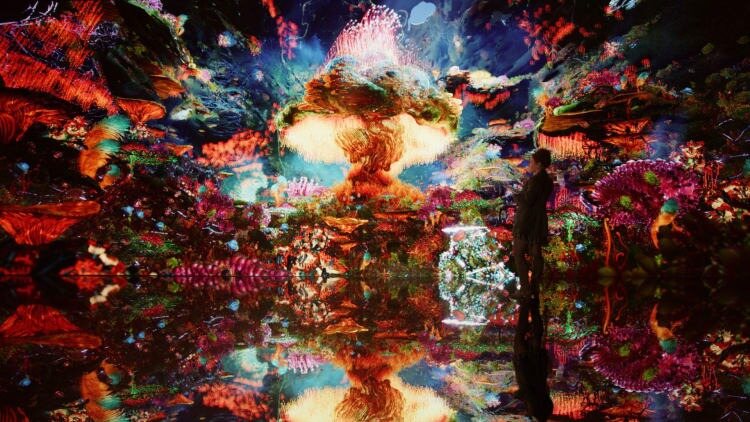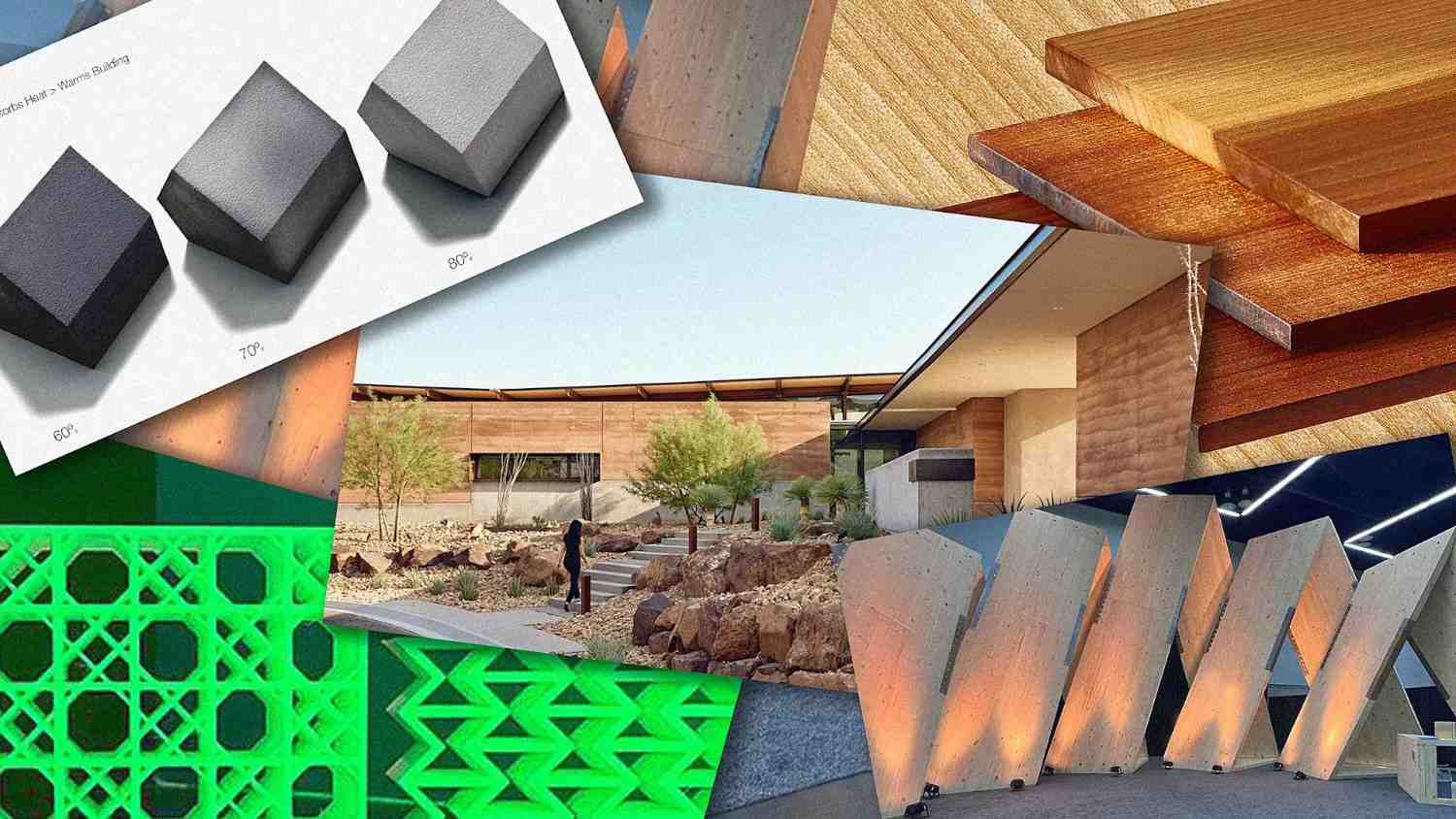- | 9:00 am
The world’s first AI art museum is designed to challenge our brains
The founders of Refik Anadol Studios are opening an immersive AI art museum in downtown Los Angeles.

The world’s first museum dedicated to artificial intelligence art will open its doors in 2025 at The Grand LA, a Frank Gehry-designed building in the heart of Los Angeles. Founded by Refik Anadol and Efsun Erkiliç of Refik Anadol Studio, Dataland aims to be a place “where human imagination meets machine creativity.”

It’s an important distinction. Anadol once told me that he doesn’t see AI as the artist, but as a way to apply a new type of “pigment,” which is what he calls his data. The project, according to the press release, is set to reshape how we engage with art, technology, and nature, creating a new frontier in the world of artistic expression.

Anadol has spent years pushing the boundaries of AI’s creative potential. Known for his use of real-world data—from weather conditions to noise to the MoMA picture archives—he uses that information as a pigment, and neural networks as his brush. Anadol has pioneered a unique intersection of art and technology, and Dataland marks the next step in this journey, serving as a permanent space for AI-generated art, much like there are museums dedicated to painting or sculpture.
He chose Los Angeles to put this space up because the city has fascinated him since childhood. His career began there with early explorations on a Commodore 64 and evolved through a residency at Google in Silicon Valley.

A permanent home
Dataland breaks away from the temporary exhibitions of AI art that have appeared in galleries and institutions worldwide, including Anadol’s recent work at MoMA: Unsupervised, a colossal 24-by-24-foot digital display that fills MoMA’s lobby. The installation feels alive, generating new forms and evolving based on real-time inputs like the motion of visitors and Manhattan’s weather.
“It’s like its own entity,” Anadol says, describing the work as a living, breathing creation. Back when he launched it, he told me that Unsupervised‘s model was trained on 380,000 high-resolution images from MoMA’s vast collection, including works by Picasso and other notable artists. Over the course of six months, Anadol’s team, in collaboration with Nvidia engineers, fed the model this data to produce an ever-changing visual experience.
“The [MoMA] curators were loving this idea of unsupervised learning,” Anadol tells me. “When they see this 200-year artwork archive, when they see that the AI can create new worlds [from it] . . . you can see the [ensuing] amazement in their faces.” It became so popular that MoMA bought it to keep it permanently in that space.
Dataland is the next logical step of Anadol’s exploration of AI and art. The space aims to take works like these out of temporary exhibits or the corner of a museum and make it the entire museum. Anadol says the goal is make AI art more than a static display. He envisions the museum as a digital ecosystem where data, AI, and human creativity merge on a grand scale.
For Anadol and Erkılıç, the idea is to push boundaries, offering a new way to experience art and technology. Having a permanent space, they say, allows them to dream without limits, creating works that would not be possible in more traditional settings.
Responsible AI
In an email interview, Anadol says that Dataland is committed to being transparent and responsible in its use of nature’s data and AI technologies. “Dataland is also establishing an Ethics Committee to advise on crucial issues such as AI governance, environmental responsibility, and ethical considerations around data collection,” he says.
The Large Nature Model (LNM)—an open-source AI model under development in collaboration with the United Nations that will become the first exhibit for the museum—is built on strict ethical principles. It involves collecting data from rainforests, glaciers, and other ecosystems to feed the AI model, creating a stunning multimedia experience that connects viewers to the natural world. “We use computing powered by renewable energy to minimize our carbon footprint,” he says, and their data collection processes are carried out responsibly, through documented permissions, ensuring that their AI-driven art aligns with values that honor both nature and human creativity.
“Our vision for the Large Nature Model goes beyond being a repository or a creative research initiative. It is a tool for insight, education, and advocacy for the shared environment of humanity,” Anadol says, adding that it will be pubicly available as an educational tool for students and educators to experiment with AI-based creativity, giving them a hands-on way to explore how technology can reveal new dimensions of nature.
Anadol has also partnered with UCSF neuroscientist Adam Gazzaley to quantify the impact of large-scale AI art on the human mind and body. “After this major reaction from visitors of Unsupervised, we partnered with Gazzaley and we did clinically approved research to scientifically quantify the impact of AI in people’s psyches,” Anadol explains. He anticipates that the research, set to be published next year, will open a new chapter in the understanding of how AI art can affect human emotions and cognition. It’s work that has informed the planning of Dataland.
Designed to merge physical and digital AI
We still don’t know what the museum will look like, but Anadol tells me that its physical design will play an equally pivotal role in realizing Dataland’s vision. He says that Gensler, the award-winning architectural firm, is designing the museum to seamlessly blend the real and digital worlds in a unique way.
Working with the engineering consultancy Arup, Anadol aim to create a “sustainable and future-forward space.” Arup’s expertise in energy efficiency and environmental impact, he says, will ensure that Dataland aligns with its mission to be both cutting-edge and ecologically responsible.
For Anadol, perhaps the clearest philosophical distinction between individual exhibits like Unsupervised and Dataland is that the former operates like “a portal to a new alternate universe created by some AI god that acts on its own volition,” while Dataland is designed to become the actual universe that lets you immerse deep, as everything around is generated in real-time, constantly evolving, and reacting. Much like the real universe itself.
In my conversations with Anadol, he’s always acknowledged the broader societal concerns surrounding AI, particularly its emotional and economic impact across industries. He understands the distress AI can cause, but remains hopeful about its creative potential. “Art, as has happened in the past, may save us from our worst demons,” he says. His optimism is also grounded in his role as an educator at UCLA’s Design Media Arts Department. “I am seeing a very optimistic change in students’ lives,” Anadol says, reflecting on how young creatives are embracing AI as a tool for positive change.
Dataland will probably become the largest, most important test to these ideas, standing at the crossroads of art and technology, pushing the limits of what is possible when humans collaborate with machines. While we have very few details about the space and how it works, we will see if it really passes the tests when it opens in 2025. That’s when we will see if this new AI universe will challenge not just how we create art, but how we perceive and admire creativity itself.







































